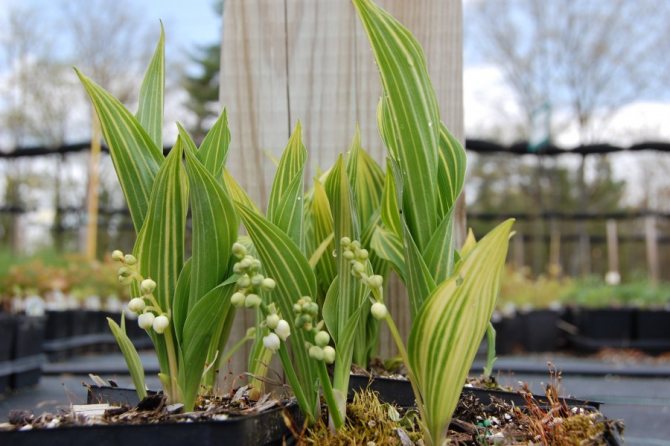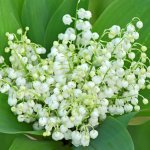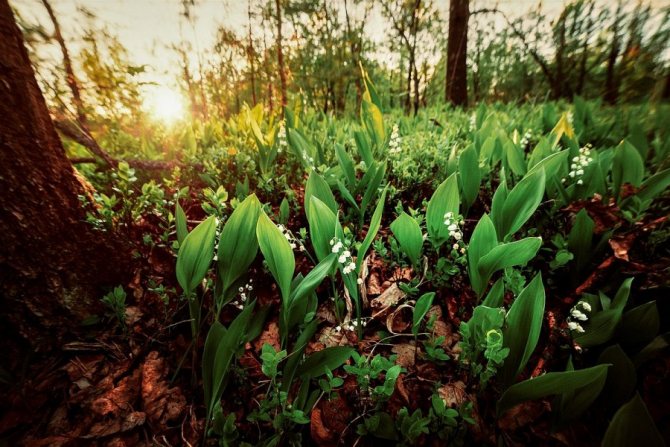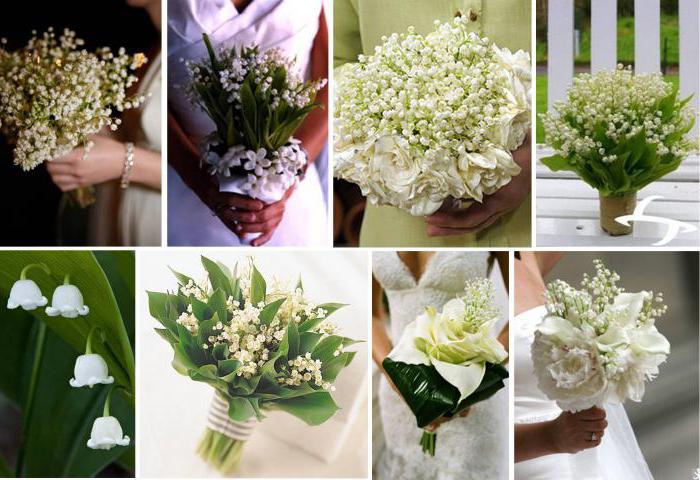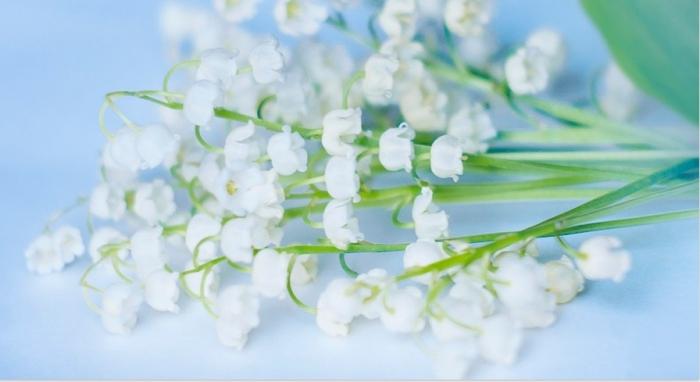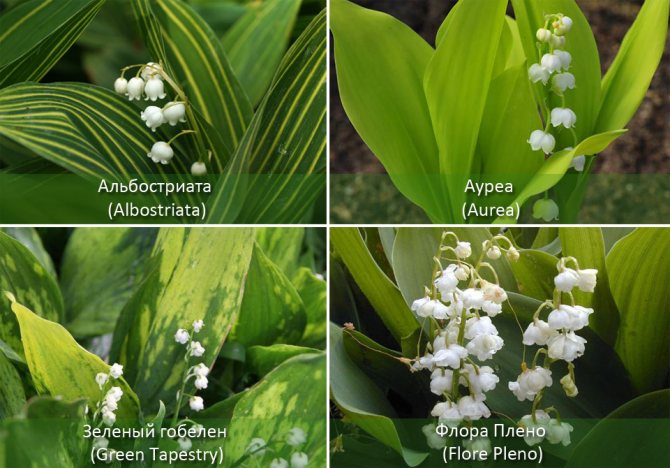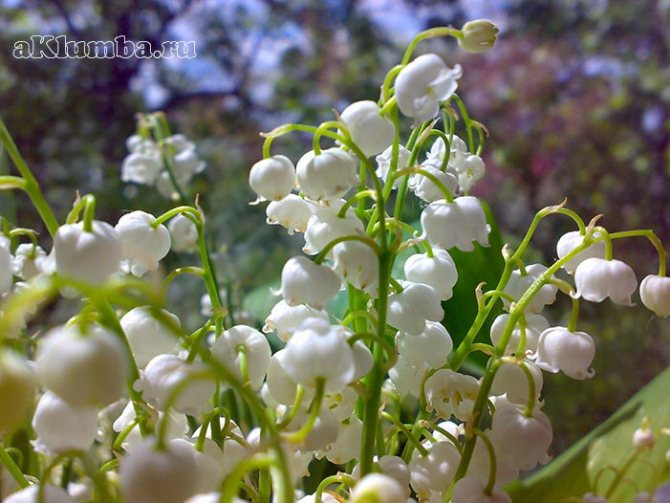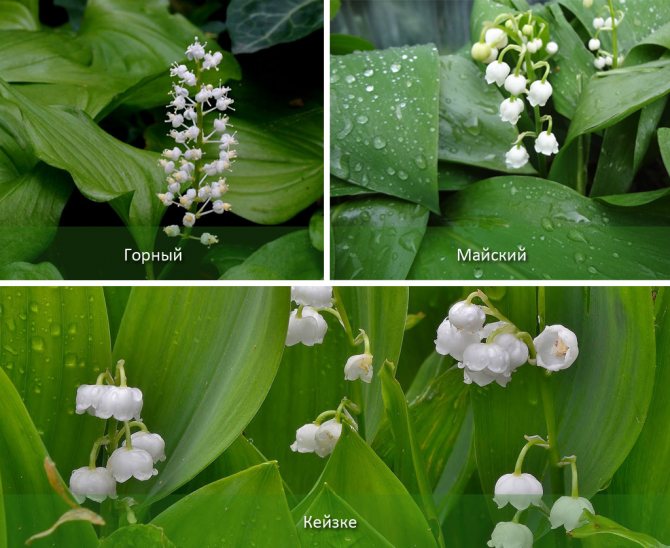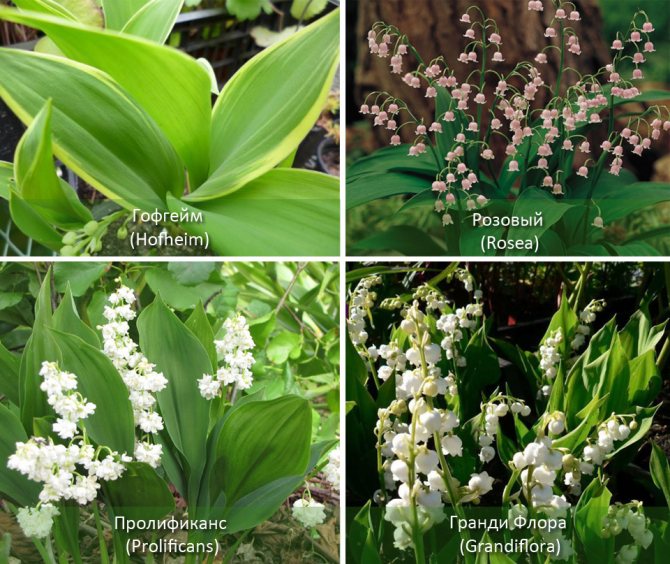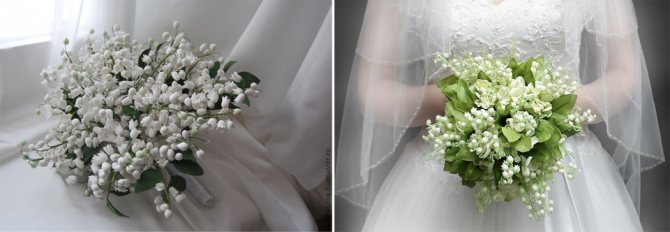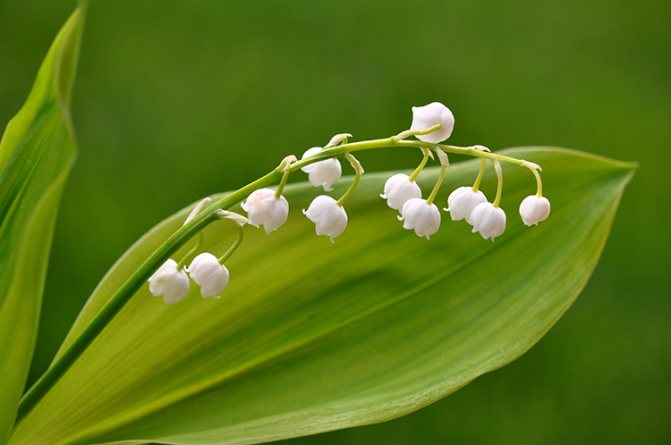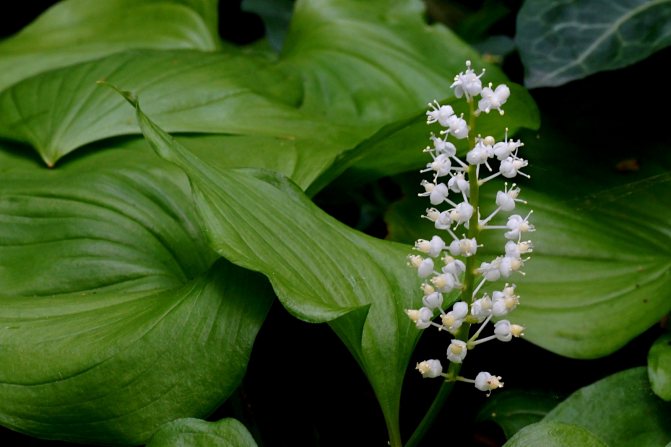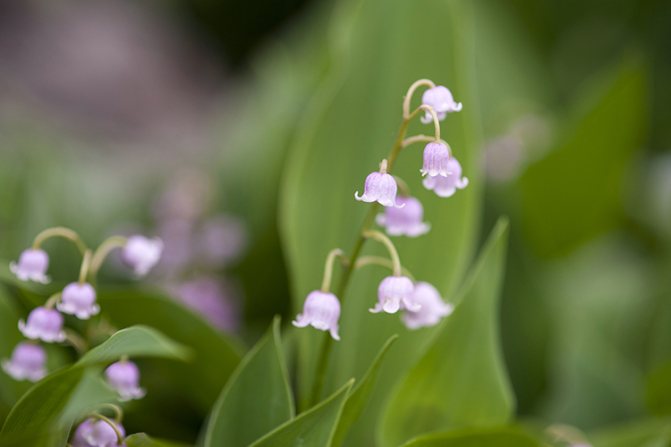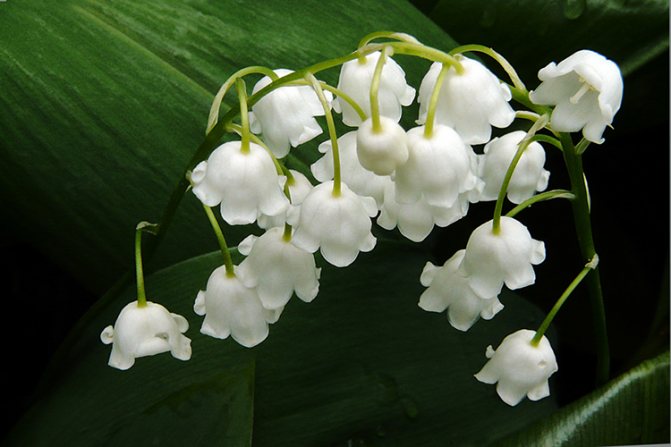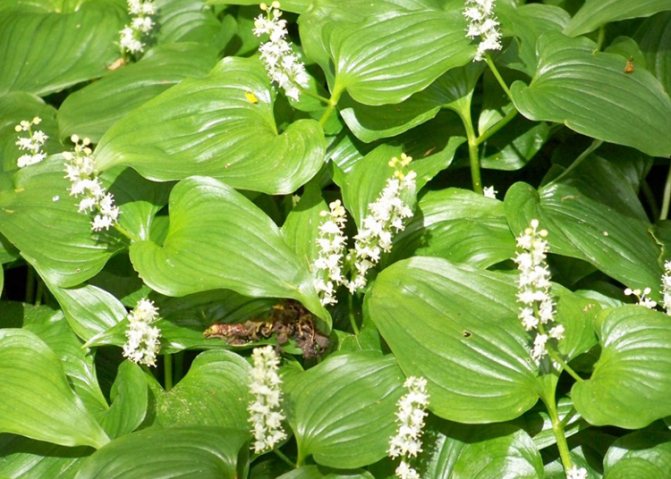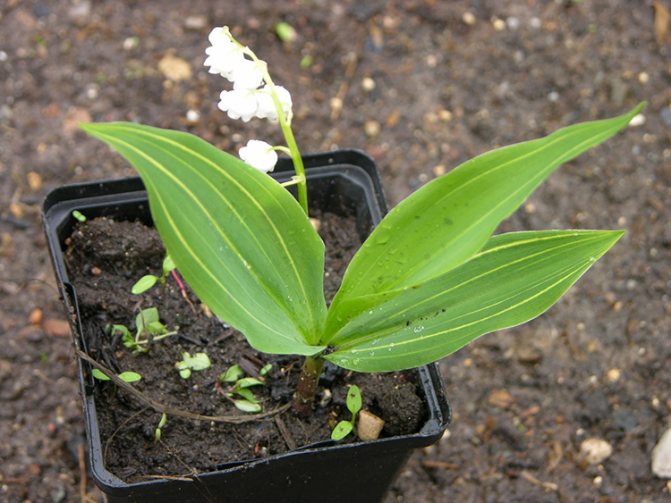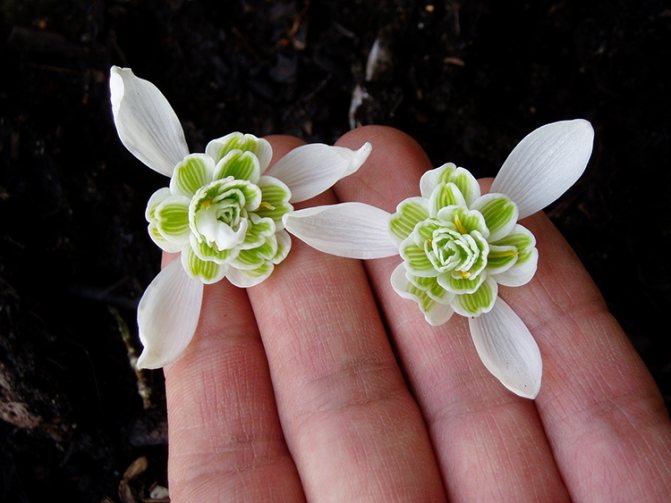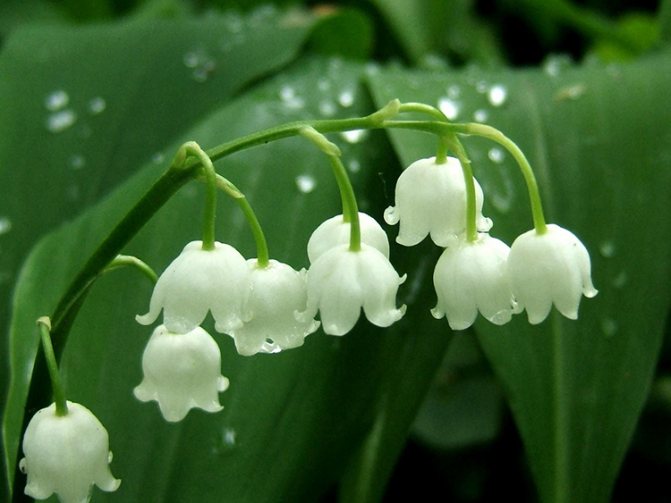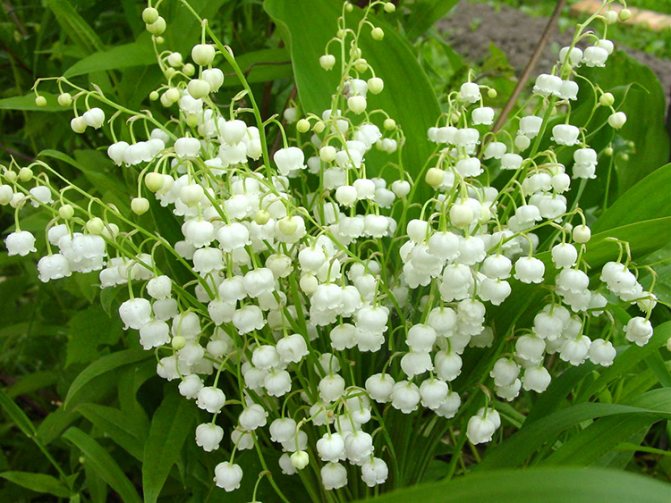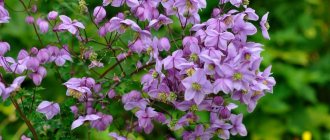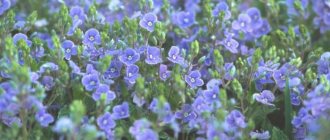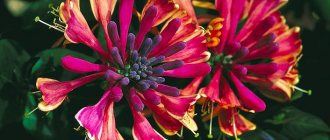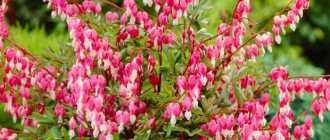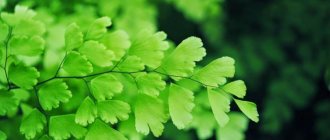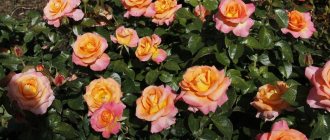Lilies of the valley are considered one of the most famous and beautiful flowers of spring. These beautiful flowers are quite rare and are listed in the Red Book as an endangered plant species. They have an unusual aroma, long stems and lovely little buds. As soon as lilies of the valley are not called in different parts of the country, there are also such names: rejuvenating flower, maevka, hare flower (salt, ears), forest bell. This plant is a genus of lily flowers, and the literal translation from Latin means "lily that grows in the valley."
Garden and forest: what are the differences?
Today, both forest and garden lilies of the valley are successfully grown in summer cottages or garden plots. Cultivated plants are more powerful, moreover, varieties with variegated leaves and double and even pink flowers have appeared recently. What is the difference between garden lilies of the valley and forest ones? Perennial plants grow in the forest, which go through a rather long stage of development before blossoming with beautiful flowers.
In the first year, the plant that has hatched from the seed is still completely hidden under the ground. In the second year, a long (up to 15 cm) green leaf appears, twisted in a tight bag. With its upper tip, it breaks through the soil and goes out. After a while, he gradually straightens up, and another appears. Moisture trapped in the leaves is sent to the roots, down, and by autumn they turn into a thick rhizome, which throws out numerous long shoots, similar to cords, each of them forming new leaves.
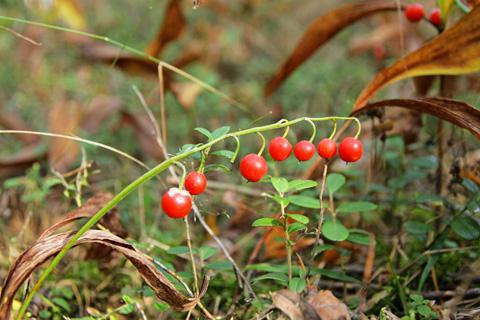
From the corner of the lowest leaf in May, a flowering stem appears, turning into a brush with small bell flowers that are facing one side. Fragrant white flowers look down and have six bent openwork edges and stamens. In late June - early July, the forest lily of the valley begins to bear fruit with bright red rounded berries, which remain on the plant for quite a long time. The inside of the berries contains small, round seeds. It should be remembered that all brightly colored forest fruits are usually poisonous, and lily of the valley is no exception in this sense.
Diseases and pests
The main disease of the lily of the valley is the parasite known by the name "Gray Rot". It covers both the leaves and the flowers themselves. If the plants are located close to each other, in poorly ventilated rooms or greenhouses, then you can pick up the fungus. To avoid this, you need to carefully plant flowers, avoiding those that are already affected by the disease.
When gray rot appears, it is better not to cut off the affected area, but to remove the entire plant. Of course, now special means are used for better protection - reagents.
Gleosporiasis is a dangerous disease for the plant. It looks like beige spots with a brown border on the leaves. The main way to avoid damage to other plants is to cut off the problem leaf. As an option for prevention - spraying with fungicides.
Insects are pests such as beetles (eating leaves), sawflies. Also, if the beetle has laid the larvae, then they can gnaw and destroy the stem itself, which will lead to the loss of the plant. If a lesion is found, if it is not critical, you can either ignore it, or remove the entire plant.Such problems must be prevented even at the preparation stage: the regular application of reagents that kill insects. This also applies to the fact that beetles lay larvae: special means kill parasites.
Timely and high-quality care for any flowers, including lilies of the valley, is very important. Care is understood as watering the plants and fertilizing them, cleaning the soil from weeds and keeping a distance from the nearest plants. If all this is left to chance, then the risk of getting sores on the plant will be much higher. Nutritional deficiencies are easily noticed by the characteristic yellow color of the stem and leaves.
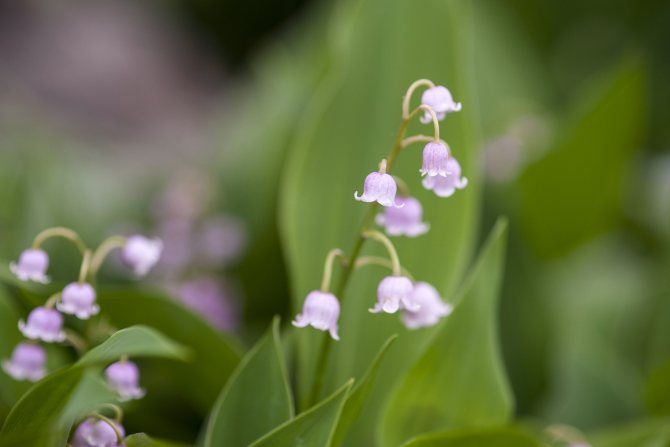

Views
Lily of the valley is a monotypic or oligotypic monocotyledonous plant. In other words, it contains a small number of species. It has only one cotyledon in its embryo. The plant belongs to the Asparagus family. All of its varieties are common in the Caucasus, Asia Minor, and Europe. It can be found in North America and China in temperate climates. Some botanists, considering the genus monotypic, distinguish only one species - the May lily of the valley, and the rest are classified as varieties. Below we will present them to you.
Description of the plant
Lily of the valley (Convallaria) is a herb-type perennial plant. Belongs to the asparagus family, the nolin subfamily. Some botanists classify the flower as monocotyledonous, while others as dicotyledonous.
Botanists have been arguing for a long time about the subtype of this flower and distinguish between mountain lily of the valley and Keiske. The differences between the species are minimal, therefore it will not be a mistake to consider it May, since this is its main species.
If you describe the lily of the valley, then do not forget about its root system, which is very well developed, and also has many thin roots. The nodes located in the rhizome have leaves, similar to scales, buds, due to which new roots appear. If we consider the vertical rhizome of the flower, then you can see that small leaves grow from it, having a dark purple or olive color on the same scaly leaves.
Leaves grow practically from the ground, and a pair of leaves radiate from the top of the root. The leaves themselves are very beautiful, green in color and with sharp tips. One of the leaves has a bud at its top, designed for a stem that reaches 25 cm in length, and those grown by gardeners have a stem reaching half a meter. The plant blooms once every couple of years. The flowers themselves appear only in the seventh year, for the 10th year the peduncle does not form. After that, 2 - 3 years pass and the system itself falls apart, after which individual plants are formed.
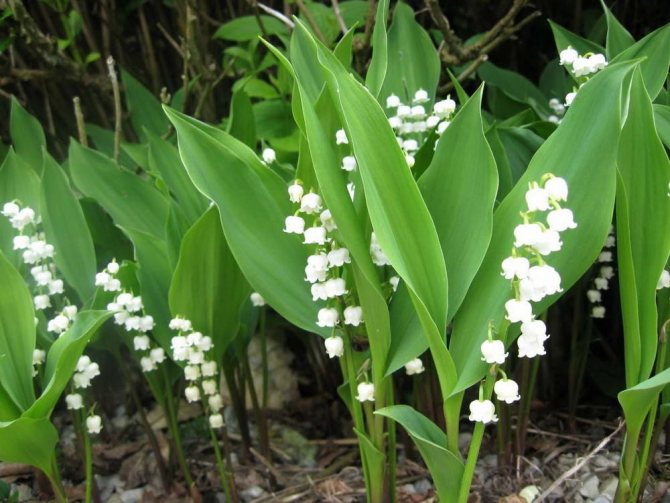

Interesting Facts
Few will know that, for example, lily of the valley is the national flower of Finland and is even depicted on one of the coins. And he became symbols in 1967. The ancient Egyptians bred lilies of the valley long before the birth of Christ, but they did it almost all year round. There is archaeological evidence for this.
During the chemical attacks of the First World War, lilies of the valley were used as a placebo for those who were gassed.
They are very poisonous in themselves, therefore it is better not to smell them for a long time, and it is highly discouraged to eat at all - at least you can get poisoned.
In France there was a custom where at a public event in the village. If a man invited a girl he liked to dance, he had to give her a bouquet of lilies of the valley. If she accepted him, it meant only one thing - she agreed to a relationship, walks under the moon and in general, she liked the gentleman. And if she did not just refuse, but threw at her feet, this meant that the lady despised her gentleman to the utmost.
Interesting facts about this plant can be found in the pages of many old books. For example, in France, even in the 16th century, there is a very beautiful custom - on the first Sunday of spring, which residents call "Lily of the Valley Day", it was customary to give their loved ones bouquets of lilies of the valley or artificially made bouquets.
Among the peoples of the world, you can find many interesting tales, beliefs and legends about the lily of the valley. Residents of neighboring countries, for example the Netherlands, claim that if they plant lilies of the field in the garden of the newlyweds, then they will love each other forever.The plant symbolizes the brightest feelings, sympathy.
According to many dream books, to see this flower in a dream means that a loved one is frank with you and does not hide anything. If you see a dry flower in a dream, then this suggests that you have greatly overestimated requirements for life and for the people around you, irritation and discontent. To see lilies of the valley in a dream means sadness and regret about past love. If a girl dreams of these flowers, it means that soon she will meet a man who will interest her. And if a man dreamed about it, then it promises him success in matters of the heart.
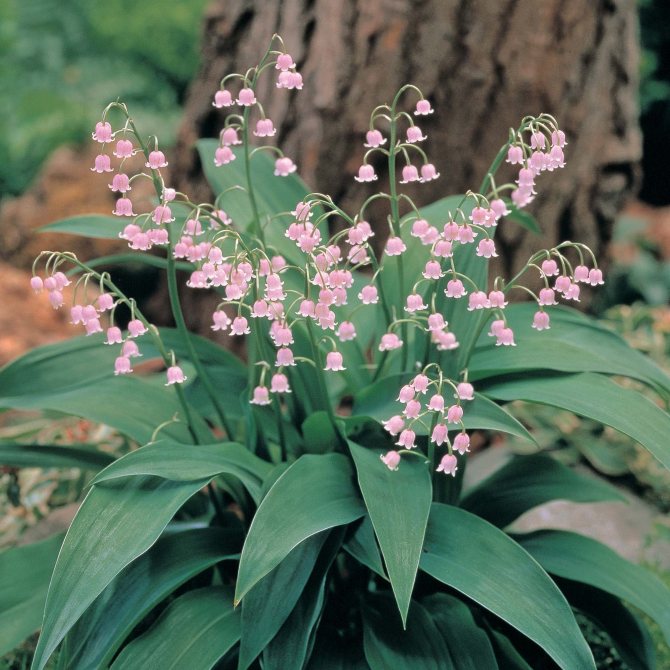

Legends
Where the lily of the valley came from, legends are made. In Russia there was a legend about the princess of the waters of the sea Magi, who fell in love with a simple guy named Sadko and the love turned out to be non-reciprocal, because he loved another. And the princess cried, and tears rolled down the blush and onto the ground. And these tears turned into unusual flowers. Thanks to this legend, lilies of the valley symbolize love, unrequited and sad.
Ancient Rome had its own legend about the origin of lilies of the valley. It is the same associated with unrequited love, but this time the lilies of the valley appeared from the drops of sweat of the goddess Diana, who ran away from the Faun, unrequitedly in love with her. In England, the appearance of lilies of the valley is associated with the legend of the knight Leonard. Only this legend got by without love: lilies of the valley began to grow where Leonard killed the dragon.
There is another very beautiful legend - forest bells sprouted from the beads of Snow White's necklace, which once burst. Now the loyal friends of Snow White, the gnomes, find their way home through them, which they illuminate.
This flower is especially loved by the French. They praise the lily of the valley so much that they even arrange folk festivals in his honor.
Not without lily of the valley in love traditions. For example, it is believed that if a girl receives this flower as a gift from a man pin it to her hair or dress, then this is a sign of consent to become the wife of this man. The dropped lily of the valley reports the girl's refusal.
There is another beautiful legend about a large scarlet berry. It appears in place of crumbling petals after the May lily blooms. There lived one young man with the beautiful name Lily of the Valley. And Spring made him an amazing gift - an inexhaustible ability to love life. He was very grateful to her for such a gift. He spoke many kind words to her and Spring could not resist him and fell in love with him. But, as you know, the Spring girl is not permanent. Giving everyone her affection, she could not stay with him for a long time. After her departure, Lily of the Valley was inconsolable - his tears turned into beautiful flowers, and the blood of his loving heart gave a red color to the berries.
Lily of the valley has some more amazing properties. For example, those collected on the new moon early in the morning will be a sign of passion and ardent love. If you want a man to be more affectionate and gentle, then put May lily flowers collected on the growing moon next to his bed. Such a bouquet will have the opposite effect on a woman - she will become more emotional.
Well, if your task is to add a spark to the relationship, then give the girl a bunch of lilies of the valley on the eve of the new moon - this will make her more depraved and lustful.
Lily of the valley may be a beautiful flower, but it still has some really useful properties. It is used in the production of herbal medicines. Also, he was overgrown with all sorts of legends, like other medicinal plants. Among them is the belief that the infusion on these flowers is a panacea and helps against all diseases, which made it a very expensive plant.
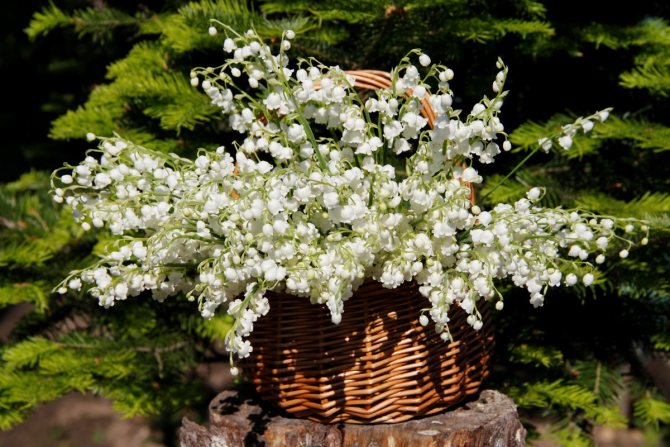

When do lilies of the valley bloom?
This flower is called "May" for a reason. The beginning of flowering falls on this month. The duration is 2 - 3 weeks. The buds bloom from the bottom up. Of course, flowering does not start exactly on May 1 - it all depends on the climate, weather and other factors. In colder regions, this period can begin as early as mid-June.
Lilies of the valley begin to bloom in May if the climate is good. In colder climates, they bloom a little later in June.
It lasts 3 - 4 weeks, while the aroma of the flower gives off in the spring and is incomparable with anything. And their color (snow-white) gives a sense of purity, purity and romance.
But this flower in the fall gives scarlet berries, ranging in size from 5 to 9 mm. Each berry consists of three chambers, each of which contains a pair of seeds. These fruits stay on the flower for quite a long time and are very fond of rodents, but for most animals, as well as for humans, they are dangerous and even poisonous.
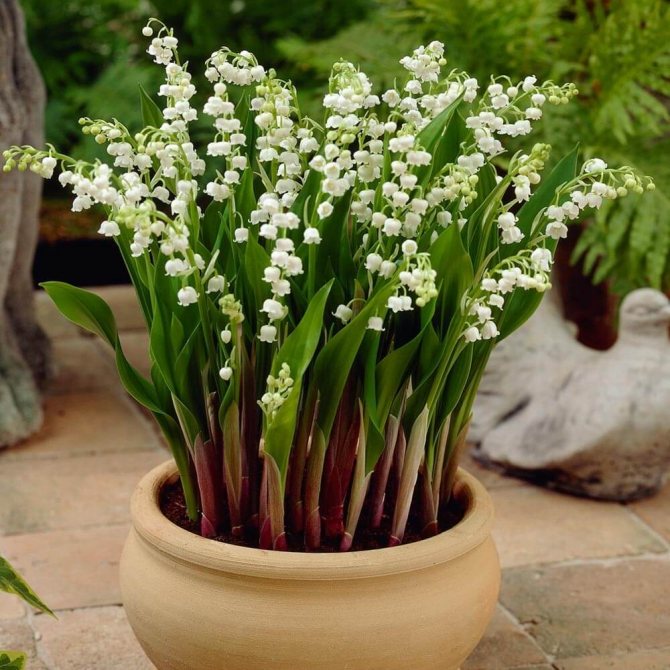

What does a lily of the valley look like?
This May flower reminds everyone of spring, because its scent is closely associated with this particular season. Outwardly, it looks like a fragile plant, but this impression is deceiving: its stem may well pierce a strong stone or asphalt. One stem carries several bells (6 to 20). It multiplies very quickly, and the climate does not play a key role for it - with its ability to take root, this is not difficult.
How many leaves does a lily of the valley have?
In early spring, the tightly collected lily of the valley leaves rise. Curious flora lovers ask themselves: "How many leaves does a lily of the valley have?" The plant most often releases two leaves, but in rare cases, the lily of the valley can release three leaves. Aerial shoots of a forest bell have a simple structure: the lower leaves at the base of the shoot, two or three large oblong-shaped lily of the valley leaves are located near the roots, and between them, at the root, there is a large bud, from which a peduncle grows.
The romantic plant is delightful, legends have always been dedicated to it, canvases were written about it, poems were formed. The most famous poem was written by the poet Afanasy Fet "The First Lily of the Valley", forcing the reader to see the beauty and sophistication of the forest bell.
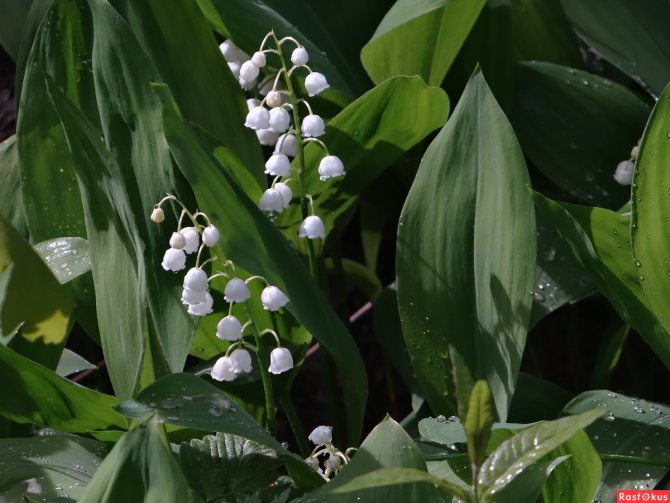

Where does May lily of the valley grow?
On the map of Europe, you can find many places where this flower grows. These cute bushes with fragile stalks can be found in clearings in various types of forests, in meadows and fields that are next to rivers. It should be noted once again that lilies of the valley are rare and endangered species, listed in the Red Book and protected by law.
May lily of the valley
Distributed in the Northern Hemisphere, in a temperate climate. The inflorescence is a rare raceme with six to twenty flowers on long stalks, very fragrant. They can be white or pinkish, bell-shaped, with bent openwork edges.
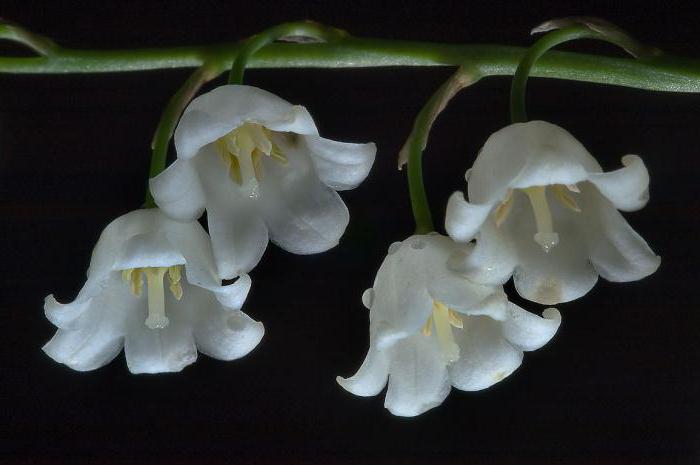

Garden forms:
- Grandiflora, which has very large flowers.
- Proliferance - with white double flowers.
- Variegata - with yellow stripes on green leaves.
Main garden varieties
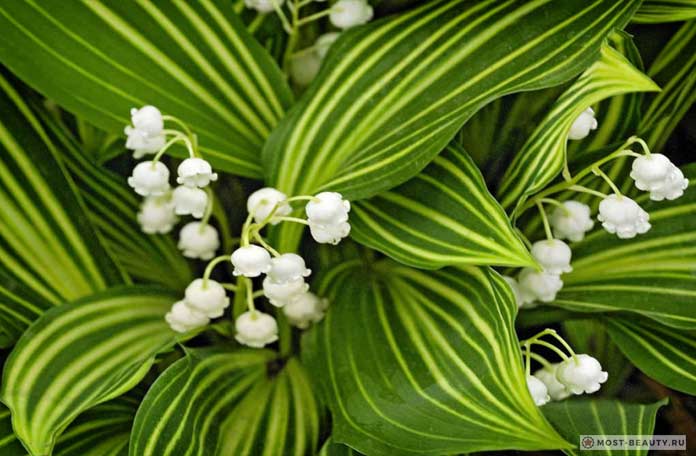

Albostriata has atypical leaves with creamy white stripes, while Lineata has yellow stripes. Fading away, these varieties continue to delight the eyes with decorative leaves. That is why they are most often used in landscape design.
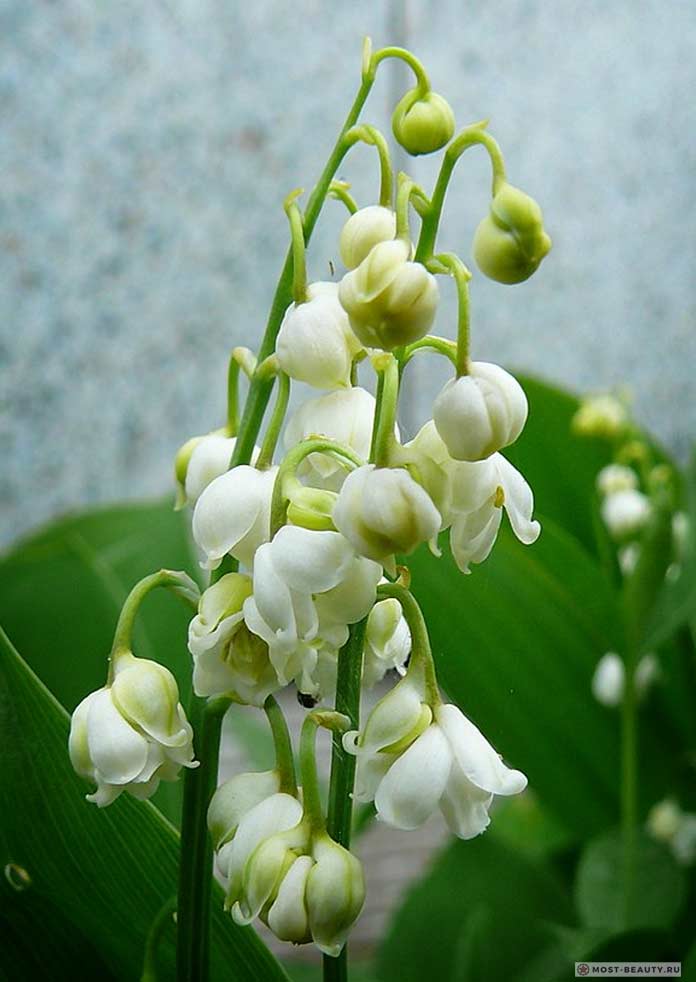

Flore Plena is a variety with 12 double flowers on an inflorescence, the stem height of which reaches up to 25 cm.
Latifolia - the main difference is the atypical pink flowers and wider leaves than other species.
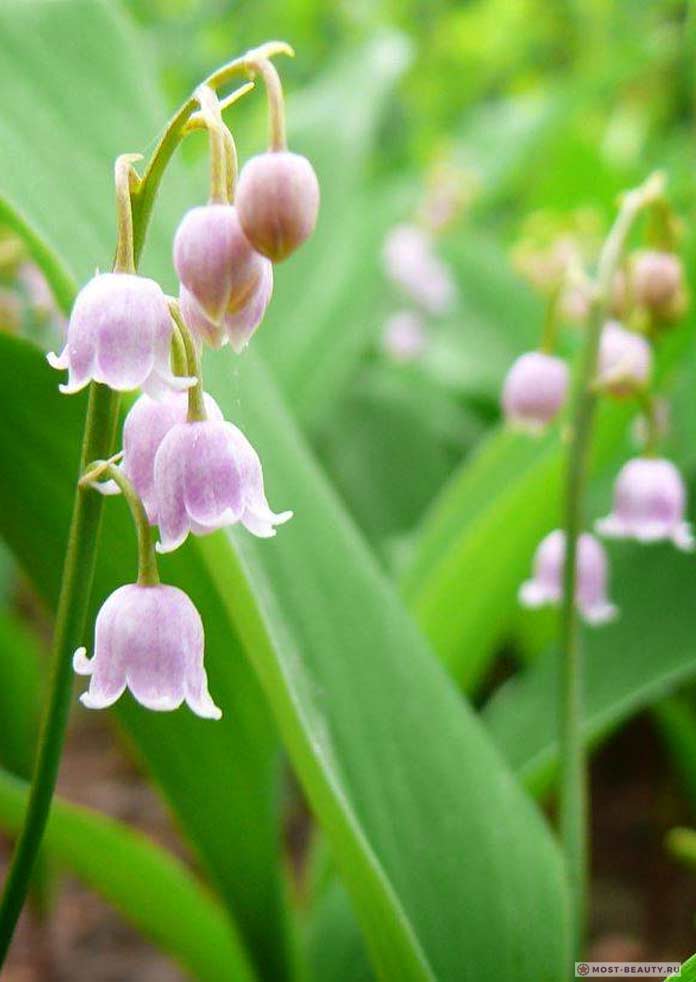

Pink petals are characteristic of Rosea flowers, which bloom up to 14 pieces per inflorescence.
Yellow leaves are found in Aurea, the most golden variety.
Hardwick Hall is a modern variety with a yellow-green border around the edges of the leaves.
Viktor Ivanovich is an extravagant and the highest variety of lily of the valley, the stems of which can reach 50 cm. Up to two dozen large snow-white flowers bloom on the inflorescence. After they have bloomed, red fruits appear, giving the flower additional appeal.
Is Kupena a garden lily of the valley?
This plant is often called lily of the valley, but this is not true. Almost nothing connects the kupen with lily of the valley. Kupena is a perennial from the Liliaceae family. It is also called the Solomon's seal, probably because of the bizarre shape of the flowers. The stems are bought in height up to a meter, and with fertile soil and proper watering, they can exceed this value.
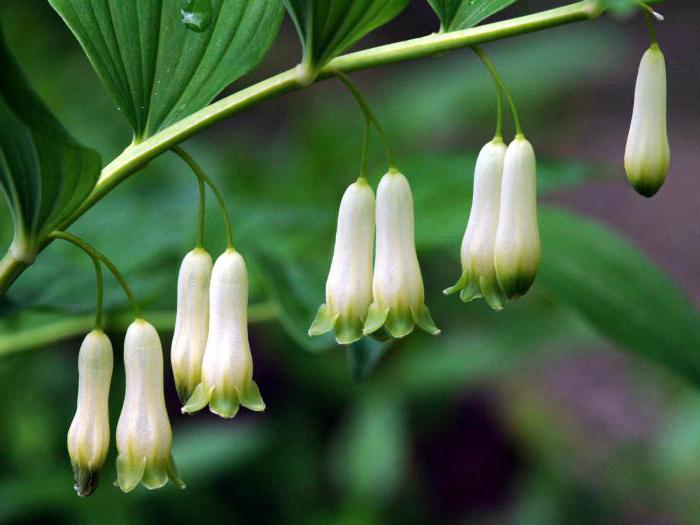

Leaves are oval, sessile. They are evenly distributed along the length of the entire stem. The flowers are funnel-shaped bells, with six teeth. They can be colored yellow, pink, purple, white. In the gardens of the middle lane, white kupins are predominantly found. This plant blooms in May - July. Kupena doesn't like too much sun. This is a plant for partial shade or shade. Perhaps this is the only thing that makes her akin to a lily of the valley. In the sun, the shoots of the kupena become weak and small, the plant often dies.
Application in landscape design
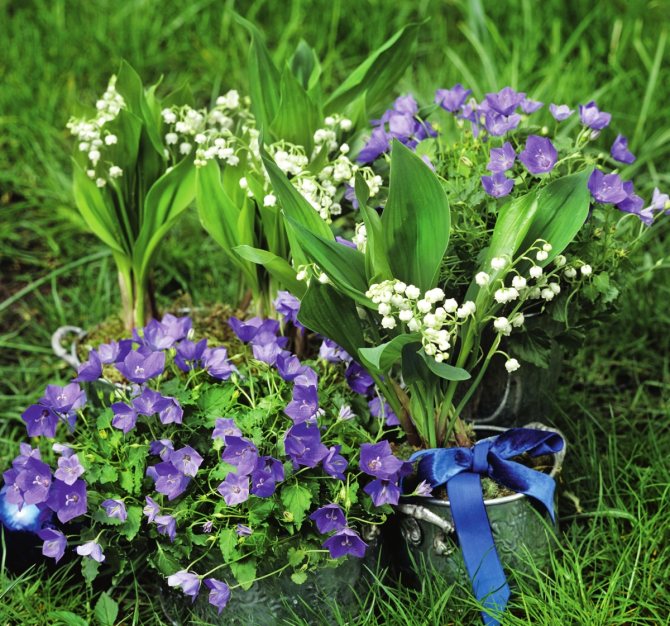

The lily of the valley has become so accustomed to the culture of European society, including in Russia, that no park or square can do without this plant. After all, he almost does not require care, but it looks very presentable. They decorate all kinds of flower beds, interfering with other flowers, make intricate patterns and other objects of decorative aesthetic beauty.
Of course, this lily of the valley is not wild and is specially grown and crossed, getting unusual colors and combinations. For example, pale purple flowers that can decorate not only the festive day of the townspeople, but also the object of leisure itself, for example, a park. But it would seem that they bloom for only a month and that's all - and they are not needed. But it was not there, almost the whole year it will be beautiful, low and dense bushes, which, as a rule, are lined near the sidewalks and paths and create the feeling that everything around is absolutely green!
Planting wild lilies of the valley is very ineffective due to the fact that they are of certain colors, length and character. They bloom in May, but garden ones, artificially grown, can bloom, say, in August. The main thing is that it would be warm. And garden plants are much easier to combine with other plants growing in the flower bed.
They go well with ferns, when out of season they hide with him, with peonies, making the visual row of the flower bed unforgettable. But it is important to remember that there are not many flowers in the flowerbed next to the lilies of the valley. After all, these beautiful forest bells grow rather quickly, capturing new territories and even crowding out other flowers. Therefore, even in parks and squares next to the lilies of the valley there is a dividing underground wall, half a meter long.
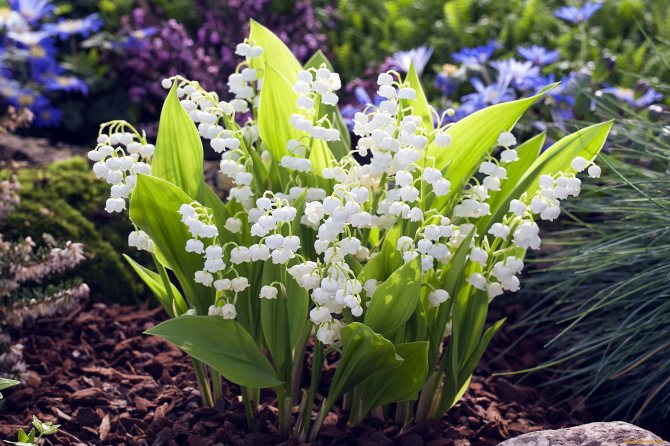

And if you plant lilies of the valley near trees, for example, larch or linden, you get a wonderful corner of living, even wild nature. But if you gave your beloved a bouquet of fresh, just picked lilies of the valley, it is better to make sure that there are no other flowers in the vase, otherwise the lilies of the valley will deprive them, drinking all the water and grass of the neighbors with unpleasant odors. This smell can give a person a headache or feel uncomfortable and uncomfortable.
But the best solution would be to make a flower bed of lilies of the valley in your country house - after all, this way you will get a wonderful corner of almost wild nature, the crown of which is the flowers from the Red Book!
Popular varieties of lily of the valley
Back in the 15th century, flower growers, inspired by the scent of this plant, cultivated it and a huge number of garden lilies of the valley appeared. Among them, the most popular in our country are:
Albostriata
A variety that, even after flowering, pleases the eye thanks to its unusual leaves. The matte green plate is covered with cream-white stripes.
Aurea is a lily of the valley with yellow leaves.
Aureovariegata
Garden lily of the valley, a photo of which is often published in floriculture publications. It has green leaves with thin yellow stripes.
Flore plena
A magnificent garden lily of the valley with very beautiful snow-white double inflorescences, which make up from ten to twelve large flowers. Plant height ranges from fifteen to twenty-five centimeters.
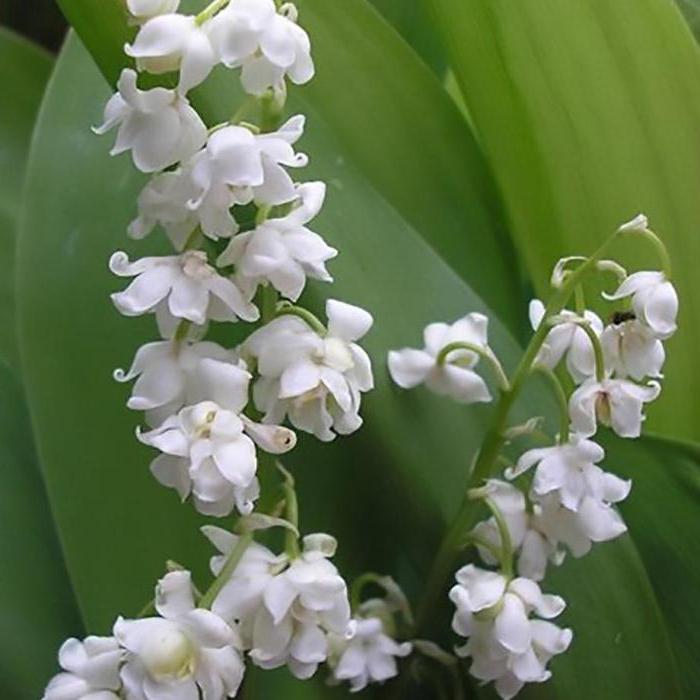

Grandiflora
Lily of the valley garden, with large white flowers and large green leaves. Differs in a special refined aroma.
Green tapestry
Plant with variegated green-yellow leaves.
Hofheim
Lily of the valley with unusual leaves framed by a beige border. The flowers are white.
Prolificans
An original undersized garden lily of the valley with numerous white double flowers. It attracts gardeners with long flowering and excellent aroma.
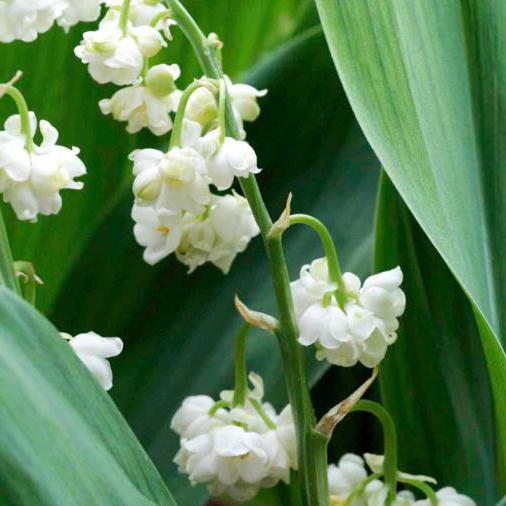

Application in cosmetology
Cosmetologists actively use not all parts of lily of the valley, but lily of the valley oil, which impresses with its fresh, cool, delicate aroma, incomparable with any other. Lily of the valley essential oil is added to cosmetics that are able to restore skin and hair tone, improve microcirculation, strengthen capillary walls, and relieve congestion.
Creams, balms, tonics and other cosmetic products are saturated with oil. The result of using cosmetic products is visible: with oil, the skin becomes softer and more well-groomed, beautiful smooth, clean.
Mask recipe for dry hair: mix one yolk, 50 ml of honey, 5 ml of May lily of the valley essential oil, then apply the mixture to the hair, from roots to ends, cover the head with polyethylene for 15 minutes. Wash off the mask with warm water and shampoo.
Hair after this procedure gains elasticity and shine. Recipe for a tonic for dry skin: add 100 ml of a spoonful of aloe juice, 2 drops of lily of the valley oil to 30 ml of freshly brewed green tea. This tonic is applied before going to bed on the face, every day.
The smell of lily of the valley in perfumery
Lily of the valley is a highly sought-after fragrance in the perfumery market. It has a very delicate and elegant aroma, with notes of freshness and the smell of wildlife. It is very convenient to compose various perfume palettes and compositions with this scent.
Unfortunately, until now the natural smell of lily of the valley has not been obtained, therefore all these fragrances are a synthetic copy of the original, which, by the way, is in no way inferior. And the impossibility of obtaining a natural aroma is associated with an extremely low derivative of essential oil from lily of the valley, which makes it impossible to extract ether from it.
Modern perfumers have learned to handle the synthesized aroma of lily of the valley so much that perfumery with this base is in demand in the elite circles of our society!
Autumn planting
Garden lilies of the valley in autumn are planted in open ground in grooves in rows. There should be a distance of at least ten centimeters between the plants, and about twenty-five between the rows. We will not describe how the seeds are sown, since they, as a rule, have an extremely low germination rate, and besides, such lilies of the valley take too long to grow.
High-quality planting material can be obtained by dividing the rhizomes. Some of the sprouts have a flower bud, so flowering can begin as early as next spring. The depth of the furrow must be sufficient to ensure that the roots of the seedlings fit vertically along their entire length. The sprouts should be buried two centimeters into the soil. If the soil in your area is too dry, be sure to water the lilies of the valley after planting.
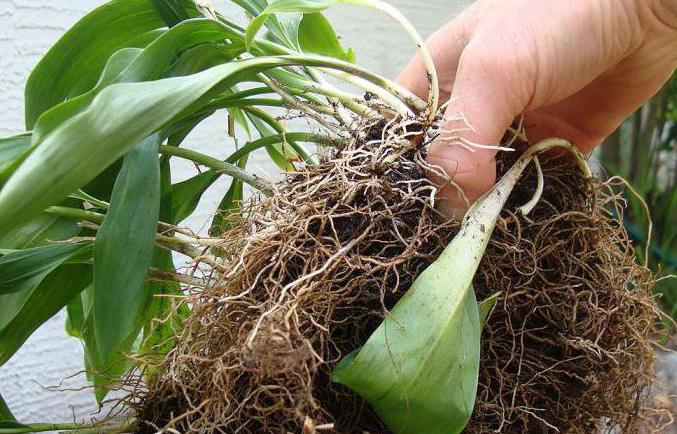

When the first frost comes, cover the young plants with mulch, which will protect them from freezing if the winter is snowless. Without a transplant, lily of the valley grows in one place for no more than five years.
Medical use
The medicinal properties of these plants have long been known. They provide over 30 cardiac glycosides, convallotoxin, convallotoxol and others. This is due to the presence of glycosides throughout the flower. The flower also contains other elements (calcium, magnesium, iron, zinc, cobalt, and so on) that are essential.Since it contains essential oil, aspirin, household acids.
The main use in pharmacology for lily of the valley is that it has a positive effect on vascular, abdominal and other diseases. Blood circulation becomes much better, the work of the heart is normalized, relieves pain and spasms. They also contribute to the normalization of liver function.
Those drugs that have this herb in the composition have a positive effect, improving the quality of the heart, but reducing the number of strokes. Acts almost like an analgesic, relieving spasms and pain. It is also used against diseases such as disorders of the thyroid, central nervous system and fever.
Topical use of this herb is most commonly used to relieve back and lower back pain. Collect this material on dry days, but after the dew has disappeared. Next comes the preparation of the ground part, but the berries do not belong to the blanks. The cut should be up to 4 cm from the ground.
Drying should be done in a ventilated place with a temperature of about 45%. Also, drying should be done on the same day, otherwise the plant will gradually die. The fruits themselves, both the rhizome and the seeds, are poisonous. Therefore, at home, without knowing the proportions, it is better to cook a little more.
Contraindications
Since the plant is poisonous, it must be used with caution. In case of an overdose, it causes vomiting, slows down the work of the heart and the central nervous system. You can not use these drugs and people who have the above, as well as those who have a pathological condition. The heart muscles start at the weakest. But there are some diseases, for example, the gastrointestinal tract, which are very sensitive to certain foods.
Self-medication is also not worth it - a referral for examination, treatment and a prescription can be obtained from your attending physician. But if, nevertheless, poisoning has occurred, it is necessary to do a gastric lavage.
Application of lily of the valley
We have discussed the medicinal characteristics of this plant above. Many drugs are only available with a doctor's prescription. As a prophylaxis, concentrates based on this herb are used in organic quantities. This includes actions for the treatment of the liver, gastrointestinal tract. Special drops are made via the Internet.
But from the useful ones that are not dispensed by prescription, one can single out a good and aromatic flavoring oil, which has a positive effect on physical and brain activity, as well as on other activities. Acts as a pain reliever but is mild. Traditional medicine, on the other hand, presents a list of what it does on the basis of this drug. With its help, lily of the valley and its derivatives help with vision, blood circulation and rheumatism. This drug is still useful for people with allergies, edema, or people with a fever.
One of the most common wild lily of the valley products is the infusion. Its recipe is very simple, you only need boiling water and flowers. It is done as follows: 5 grams of lilies of the valley are taken per vessel, with a capacity of half a liter, filled with boiling water for 45 minutes. They drink one spoonful a day.
Of the advantages, I would like to note that it relieves cramps, fatigue. A folk recipe for infusion for pain in the heart is made as follows. To do this, you need a can of three liters, where the tea leaves from mountain flowers are poured in by a third. They drink 12-14 drops three times a day, regardless of the intake. With conjunctivitis, this solution is taken and with a ratio of 1 to 10.
There is also a traditional medicine aimed at treating diseases of the cardiovascular system. To do this, take dried hawthorn flowers, wild carrot seeds, fresh buds of lily of the valley (field) and motherwort. They are mixed in the following sequence: 2.1.2.1.After that, the vessel is filled with water (1) and vodka (5), after which it is infused for two weeks, and then filtered. After that, the broth is ready for use, you need to drip 22 - 24 drops, but into a glass of water (100 ml).
If there is a problem with the eye associated with damage to the optic nerves, as well as the retina, then traditional medicine advises to make a decoction from our culture and nettle (oddly enough, the same May), but the ratio will be 1 to 5. The cooking process is very simple: prepare the product itself (raw materials), then put a spoonful of liquid and leave for 6 hours. After that, the herb is mixed with soda, but in gauze and applied to the eyes 2 times a day. They use the healing properties of lily of the valley for the better functioning of one of the most important systems of our body - the endocrine system. Therefore, for its better functioning, certain herbs are harvested: lily of the valley, parsley, fool. Then the solution is poured with boiling water and the time goes for 15 minutes. When the broth is ready, they drink it three times a day half an hour before meals.
Many useful substances must go into an aqueous solution. From 10 drinks for each one it turns out you need a glass of water and a lid. If you have neurosis, then it is worth brewing other herbs: take one tablespoon of dry grass, after which it is all poured with soda. They drink this three times a day, though from a spoon. In general, lily of the valley is perfectly brewed like ordinary tea, not at the expense of quality.
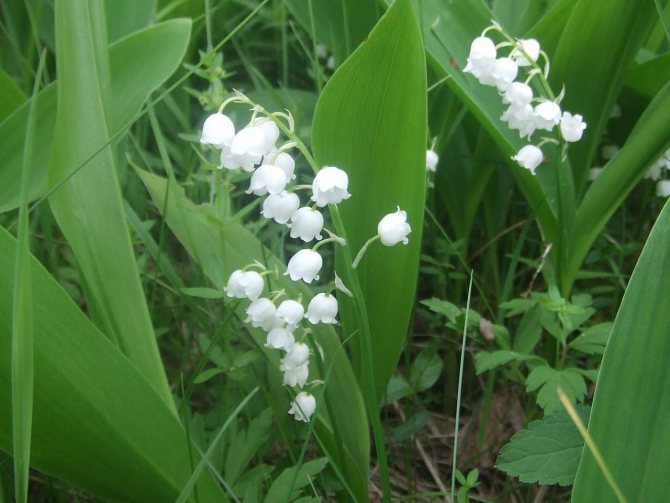

Tincture
Some experts (nutritionists, fitness doctors) talk about an excellent alcoholic tincture on lilies of the valley. It is a clear liquid that has a khaki color, but closer to brown. The taste will be very bitter, and the aroma will be very specific. This tincture is highly recommended for disorders in the cardiovascular system, as well as with a high pulse rate (over 90 beats per minute).
In addition, it perfectly helps with depression, insomnia. After taking this tincture, you will want to rejoice and sleep. Such a product is quite easily sold in almost any pharmacy. Doctors prescribe this drug 25-35 drops, strictly 3 times a day. In different situations and cases, in addition to infusion, you also need to take additional drugs that will help remove harmful toxins from the body much faster. An example is the famous valerian, belladonna and others.
Currently, enterprises specializing in the production of pharmaceutical products are producing drops, the basis of which is actually an alcoholic tincture of lily of the valley:
- Lily of the valley and valerian drops, where the ratio is 1 to 1;
- Lily of the valley and valerian drops, but with adoniside. The ratio is 1 to 1 to 1;
- Drops of lily of the valley and valerian, but with sodium bromide. The ratio is 1 to 1, and the bromide content is 8.5%;
- Drops of lily of the valley and motherwort, and the ratio is the same, 1 to 1.
How to care?
According to flower growers, planting garden lilies of the valley does not cause any special problems. And caring for them is pretty simple. Lilies of the valley take good care of themselves, and sometimes they can even displace other flowers from the flower bed. However, for a true grower, it is important that the flowers do not just grow and bloom, it is necessary that they reach the highest level of decorativeness.
To achieve this, plants must be given attention. Lilies of the valley are watered in hot weather so often that the soil is constantly wet, and it is imperative to loosen and get rid of weeds after watering. Lily of the valley is responsive to feeding with organic fertilizers - humus or rotted manure.
Flowers are susceptible to diseases such as gray vegetable rot, which, fortunately, can be treated fairly quickly with fungicides. Of the pests, the greatest harm can be caused by a nematode, from which there is still no salvation: infected plants are removed and necessarily burned.
Why don't lilies of the valley bloom?
One of the main reasons for this problem is both the lack of normal sunlight and its excess.These flowers should grow in relative shade, therefore, when planting them, it is important to consider how much they will spend both in the light and in the shade.
A humid environment is also necessary for normal growth, so they should be watered often. On dry soil, especially on mountainous or stone, the plant will take root poorly, or even wither altogether. This culture treats transplants well, but it should not be abused either.
Since the lily of the valley captures every piece of land, over time the planting area will increase and you will get a very beautiful flower bed.
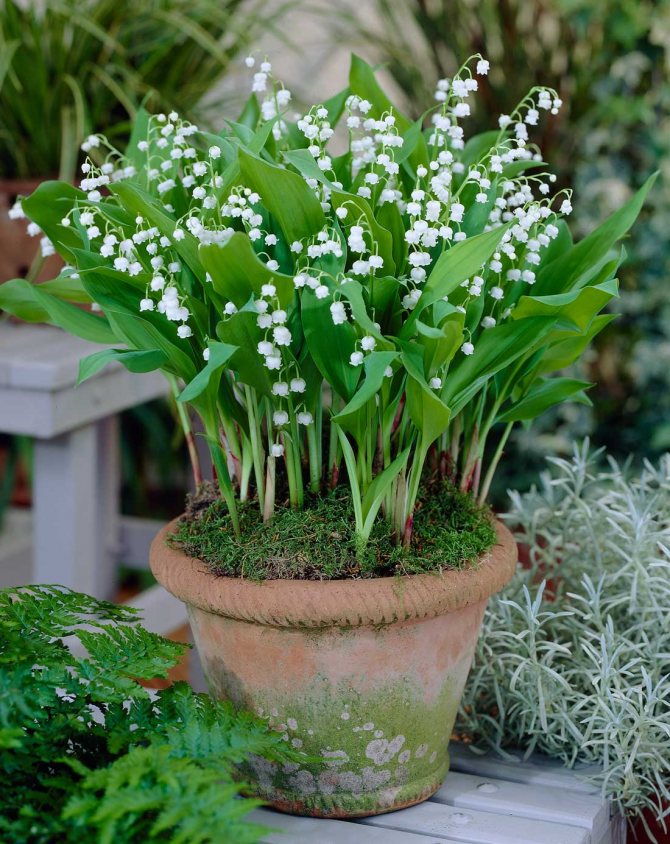

Lilies of the valley after flowering
At the beginning of summer, lilies of the valley fade, but even after that they do not lose their decorative properties for some time and decorate the site with their dark green wide leaves. So that the lilies of the valley do not oppress other plants and do not seize foreign territories, the flowerbed should be fenced with slate sheets dug into the ground to a depth of 40 cm.
With the onset of autumn, you can start transplanting plants, if necessary, and if this year you do not plan to transplant, then you can forget about lilies of the valley and quite calmly deal with other flowers - frost-resistant lilies of the valley are not afraid of winter cold.
With the arrival of spring, when the snow has completely melted, remove the dry leaves left over from the last year from the flower bed and wait for the first flowers to appear.
Care
Lily of the valley is an unpretentious plant that does not require any special care and constant monitoring.
The only thing you need to watch out for is that in hot and dry weather, you need to constantly water the plant, if you don't, flowering may be delayed or the whole plant will wither.
Also, after fertilizing or watering, you need to weed around the lily of the valley. The humidity should always be increased. The soil should be rich in organic fertilizers, acidity should be minimal. Before planting this crop, the area where the sowing will take place must be cultivated to a depth of 40 cm. Before planting, the soil must be fertilized with special fertilizers.
After sowing, after about a month, you need to re-fertilize the land with organic matter, but not with mineral fertilizers. A year later, the earth is again fertilized with organic matter (with nitrogen), in the spring. In the first month of summer, they again fertilize with organic matter. Only in the third year will the lilies of the valley begin to bloom. Unfortunately, this cannot be accelerated.
Lilies of the valley grow very quickly, occupying the largest flowering area. To avoid this, it is necessary to dig an obstacle, for example, made of steel, into the ground. The depth must be at least one meter. On such a fenced area, lilies of the valley will grow for about 10 years. When cutting, it is necessary to remember that this plant will take nutrients from the water from other flowers, which will lead to rapid wilting.
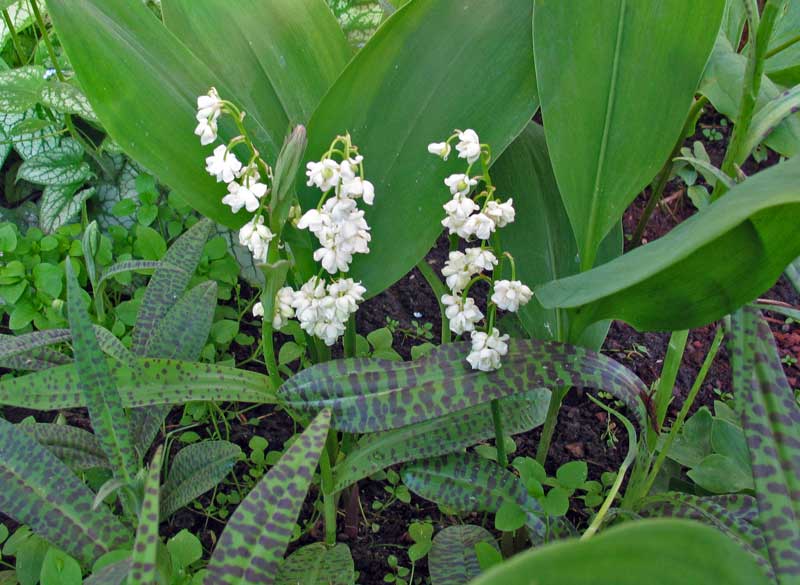

Contraindications and harm
Preparations made from lily of the valley should be used on the recommendation of a doctor and in compliance with the dosage, otherwise, instead of a healing effect, the agent may be harmful.
In case of an overdose, the following reactions may occur:


- Nausea and / or vomiting.
- Pain in the epigastric region.
- Dizziness and palpitations.
- Noise in ears.
- Convulsions and even cardiac arrest.
When these signs appear, you should immediately call an ambulance and carry out pre-medical measures: gastric lavage, enema and absorption of absorbents.
Application of medicinal properties
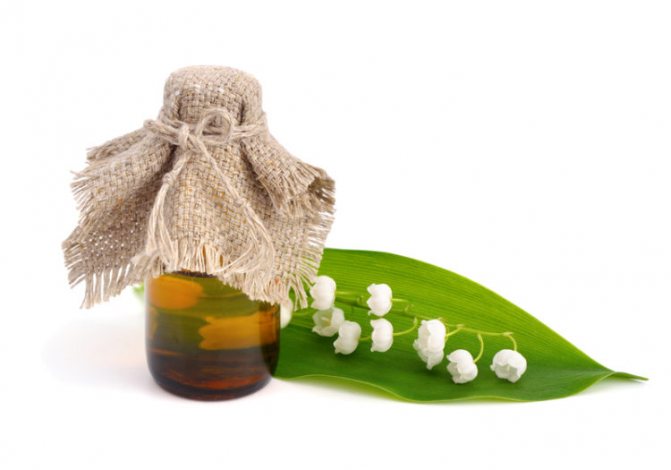

Let's highlight the main medicinal properties of lily of the valley and find out their application in modern medicine.
The plant can be safely attributed to the following properties beneficial to the human body:
- anti-inflammatory;
- soothing;
- antispasmodic;
- diuretic;
- diuretics;
- vasodilators;
- antifebrile.
Planting and caring for lilies of the valley
- Landing: from September to early November.
- Bloom: April May.
- Lighting: partial shade, shadow.
- The soil: moist, rich in organic matter, neutral or slightly acidic reaction.
- Watering: only in abnormally hot times.
- Top dressing: humus or rotted manure, solutions of organic or mineral fertilizers.
- Reproduction: mainly by dividing rhizomes, less often by seeds.
- Pests: sawflies, nematodes, onion crackers.
- Diseases: gray vegetable rot, gleosporia.
- Properties: lily of the valley is poisonous.
Read more about growing lilies of the valley below.
Favorable time and conditions for disembarkation
Lilies of the valley grow very densely than other flowers can displace, due to their poisonous abilities, so it is advisable to grow them separately from other flowers. It is favorable to choose the time for planting flowers in the fall before the onset of frost.
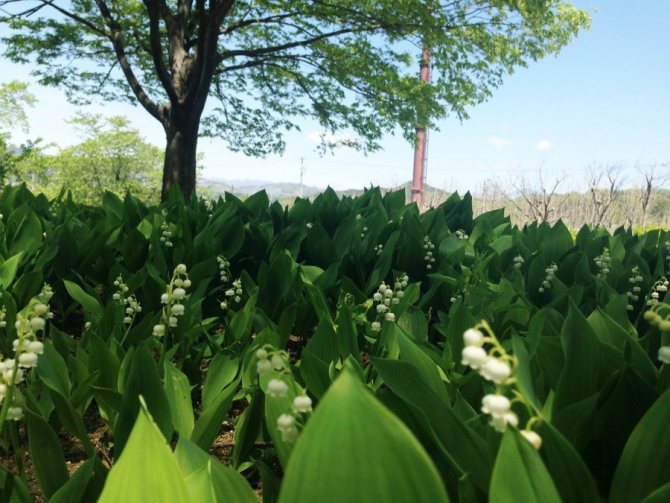

The landing site for small flowers is preferred in a shady area, under bushes or trees. This will provide the shade they need and prevent the sun from quickly removing moisture from the soil.
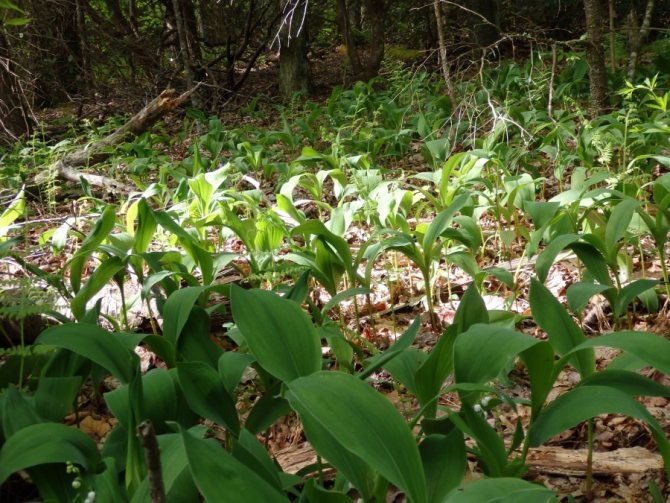

However, the terrain should not be too dark, they need the rays of the sun to bloom. In order for the roots to take root, they need to be watered well enough.
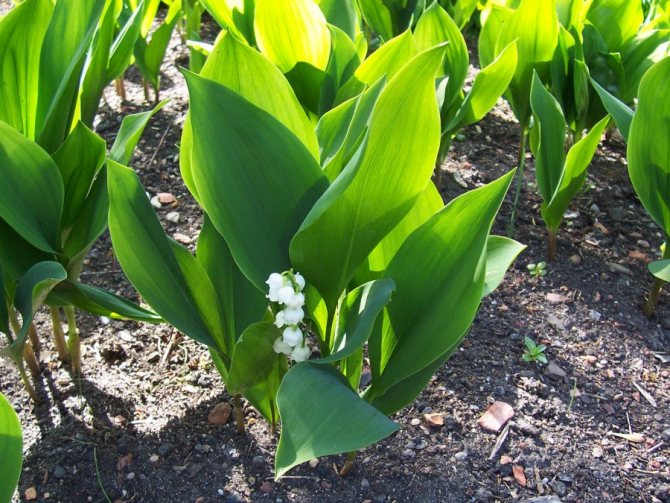

Chemical composition
The chemical components that make up the lily of the valley have been studied for a long time. It contains glycosides of the cardiac type, namely:
- convallotoxol;
- convallotoxin;
- convalloside;
- convalloxin.
In addition, it includes:
- essential oils;
- sugar;
- flavanoids;
- acids;
- asparagine.
Experts do not advise bringing lily of the valley into the room, as its pungent smell can adversely affect your well-being.
Preparations of modern medicine


In modern medicine, this plant is used in the following preparations:
- "Korglikon" (available in ampoules). Made on the basis of lily of the valley leaves. Indications for use: acute and chronic heart failure, tachycardia, cardiac decompensation against the background of arrhythmias and circulatory disorders. Despite the fact that it can be prescribed to children from 2 years of age, "Korglikon" is contraindicated in endocarditis, ventricular tachycardia, myocarditis during an exacerbation, cardiosclerosis, Wolff-Parkinson-White syndrome and bradycardia.
- "Konvaflavin" (available in tablets). The main component of the preparation is the leaves of the plant. Indications for use: diseases of the biliary tract, liver. Choleretic and antispasmodic. Contraindicated in case of individual sensitivity to the components of the drug.
- "Konvallatoksin" (available in ampoules). Made from lily of the valley leaves and flowers. It is used to treat chronic heart failure, heart rhythm disturbances. The drug is contraindicated in people with the following diseases - acute myocarditis, cardiosclerosis, extrasystole.
- "Cardompin" (available in drops). In addition to lily of the valley, the composition includes peppermint, hawthorn, valerian. It is used as a sedative for heart failure (initial stage), cardiac neuroses. Contraindicated in case of individual intolerance to the components.
Artistic description of lily of the valley in legends
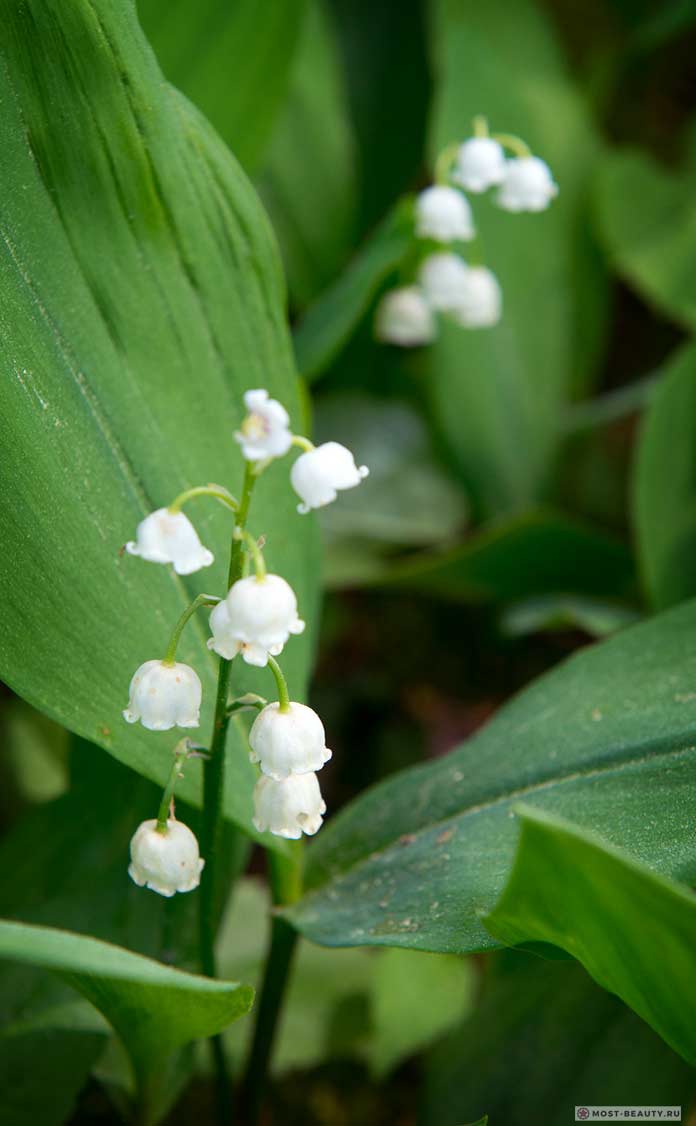

Beautiful lilies of the valley are surrounded by many romantic legends, they are often mentioned in fairy tales. For example, Snow White, running away from her stepmother (from the fairy tale of the Brothers Grimm), scattered a necklace that turned into beautiful snow-white spring flowers. Legends attribute to the plant the role of the abode of gnomes and elves. Other beautiful legends say that lilies of the valley in the forest serve as a nocturnal refuge for sun bunnies.
The ancient Romans believed that beautiful bell-shaped flowers were formed from droplets of sweat of the forest goddess Diana, fleeing from the fauns. According to an old Russian legend, lilies of the valley are the tears of the daughter of the water king, the Volkhovs, frozen in the green of spring grasses, from unrequited love for the guslar Sadko.
Another legend presents them as pearls from the laughter of Mavka in love. The Orthodox consider lilies of the valley to be the tears of the Mother of God, flowers of innocence.
Sprouting
May lily of the valley is widespread in the forest, forest-steppe and steppe zones of the European part of Russia, in the Caucasus, and the Far East. In its western part, it stretches from the Arctic Circle to almost the mouth of the Dnieper and Danube, narrows to the east, wedging into the Southern Cis-Urals along with broad-leaved forests. The northernmost location of the lily of the valley is in the south of the Kola Peninsula. The second part of the range covers the western and central parts of the North Caucasus.
May lily of the valley grows on soils of different texture, more often - on sandy loam and sandy soils with different acidity (pH 3.0-7.8). Humus content 0.7-13.5%; mobile forms of phosphorus - from 1 to 10, potassium - 1.5 - 20 mg per 100 g of soil. Lily of the valley prefers (especially in the northern part of its range) rather rich neutral and slightly acidic soils.
In the northern part of the range, lily of the valley conditions are favorable for fresh meadow moistening, and in the southern part for intensive damp meadow moisture.
Within the range of growth, the ratio of lily of the valley to illumination conditions also changes. Lily of the valley can withstand an illumination of 1.5-90% of the total radiation. It is a light-loving plant in the north and shade-tolerant in the south.
Lily of the valley is often a component of the herbaceous cover of deciduous, small-leaved and coniferous forests. It often dominates in the herbaceous cover of birch, aspen, oak and linden forests, forming lily of the valley types of forest. It is also characteristic of the herbaceous cover of complex pine forests, but it is also found in other types of pine forests, even in lichen and sphagnum pine forests, in mixed oak-pine and hornbeam-pine forests, and in complex spruce forests. In the forest-steppe and steppe zones, lily of the valley grows in floodplain and ravine forests, along the bottom of ravines and on the slopes of the northern and western exposure. Occasionally settles on flooded meadows. In the Caucasus, it is abundant in oak, oak-pine, hornbeam and chestnut-oak, as well as in floodplain deciduous forests.
May lily of the valley is a forest anthropogenically shrinking plant. Generative shoots of lily of the valley are intensively exterminated by the population, and this, of course, negatively affects the state of the population as a whole, which ceases to rejuvenate due to regularly appearing seedlings. Nevertheless, the plant exhibits significant resistance under conditions of strong trampling, however, the lily of the valley does not tolerate prolonged intensive trampling and extermination and gradually drops out of the herbaceous layer. In the reserve, it is found occasionally under the canopy of valley forests. Grows in small groups with an abundance of 1-2.
Reproduction
Seeds are notable for poor germination. But if you decide to resort to this method, then sowing is recommended at the very beginning of autumn, then by spring they will already sprout.
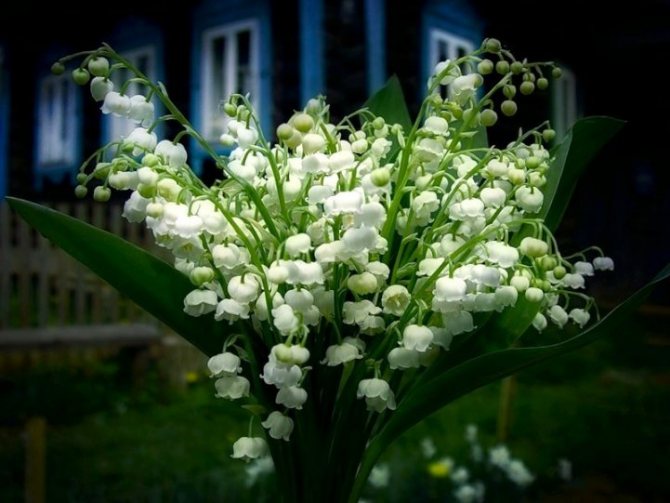

Experienced gardeners prefer to propagate the plant by dividing the root system. When dividing, it is important not to touch the flower bud in the sprout. Already next spring, you can see the flowering of beautiful lilies of the valley.
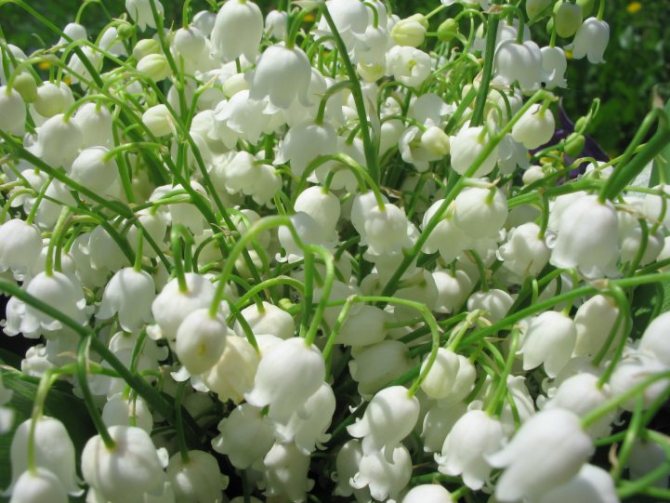

Outcome
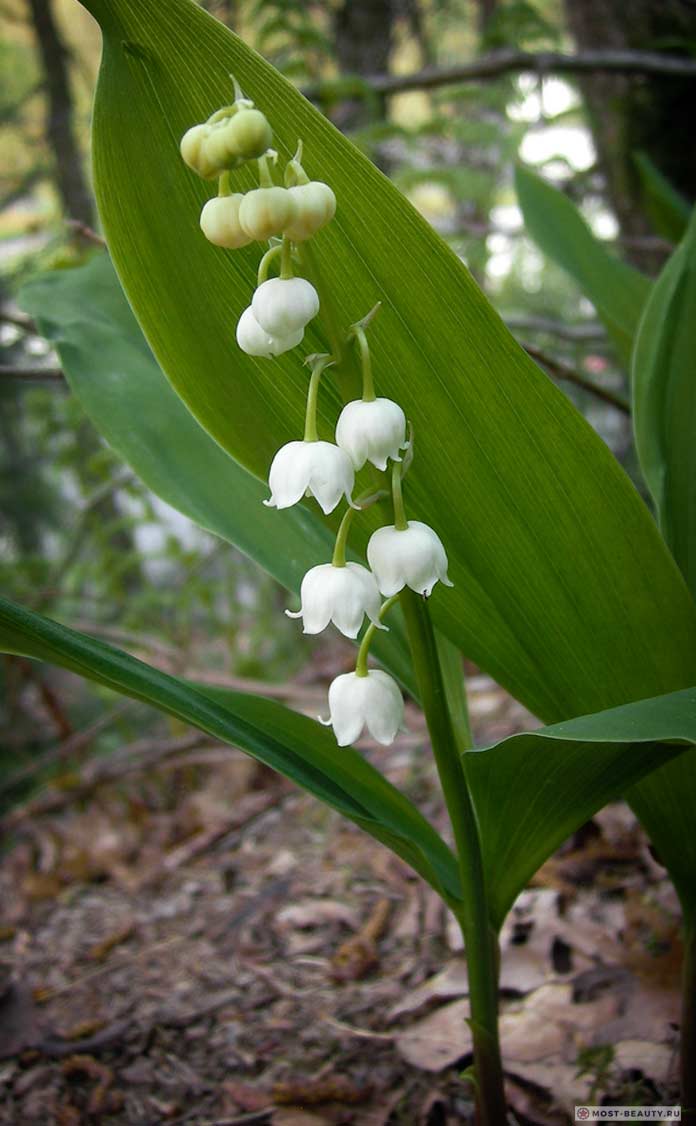

The fragile and delicate lily of the valley flower with miniature snow-white bells fascinates at first sight. This symbol of tenderness and boundless love, even in the photo, seems like a forest wizard, giving a feeling of joy. To some, its aroma may seem very harsh, but its truly enchanting beauty is unlikely to leave anyone indifferent.
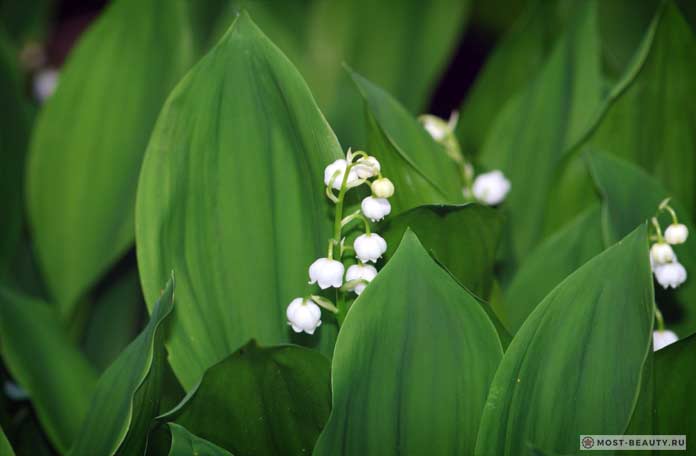

Forcing lilies of the valley for the New Year and Christmas
Only garden varieties of lilies of the valley are used for forcing. Large-flowered forms are best suited for this purpose.
- In mid-September, dig up the rhizomes, select the sprouts with a flower bud. Soak the dug out rhizomes in water for 2 hours, and then wrap with sphagnum moss or a damp cloth and put in a plastic bag.
- Store the bag of lily of the valley rhizomes in the refrigerator.
- In early December, remove the rhizomes from the refrigerator, and incubate for 24 hours at room temperature.
- Soak for 10 hours in warm (30 degrees) water.
- Plant the sprouts in the ground, cover with glass or plastic and place in a warm place.
- After biting the sprouts, the glass or film is removed.
- When buds appear, the plant is taken out to a cool place, thereby prolonging the flowering period.
After distillation, the rhizomes of the lily of the valley completely exhaust the supply of nutrients. Such a plant cannot be planted in open ground, since it will not be able to form a new root system.
If you need to transplant flowers
It is customary to plant lilies of the valley with cuttings, less often with seeds. For the first method of transplanting, the upper part of the rhizome is cut off and planted in the ground with fertilizers; leaf humus is used for fertilization. Leave the distance between the planted rhizomes about two palms.
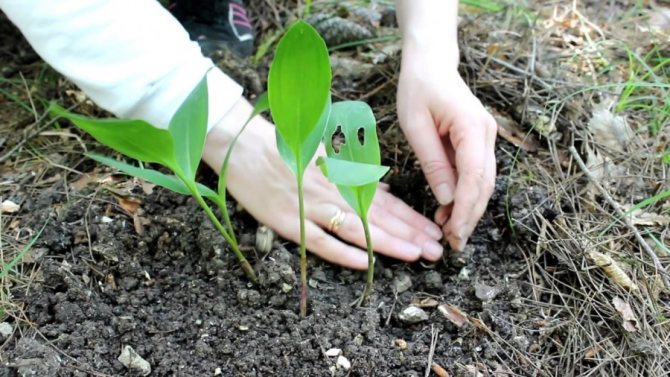

To accelerate their growth in the fall, they are stocked with cuttings, choosing larger tops and planted in pots, stored in small greenhouses. They insulate the pots with moss or sand, cover them almost completely.
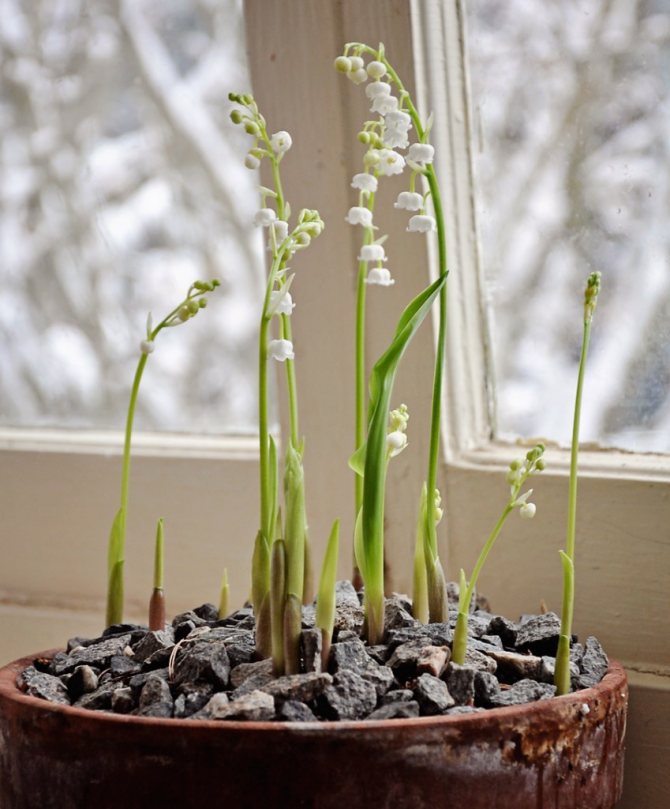

Growing flowers in the warmth, in less than a month, the plants begin to bloom and you can get flowers even in winter. To speed up the process, the air temperature in the greenhouse should be approximately slightly above room temperature.
